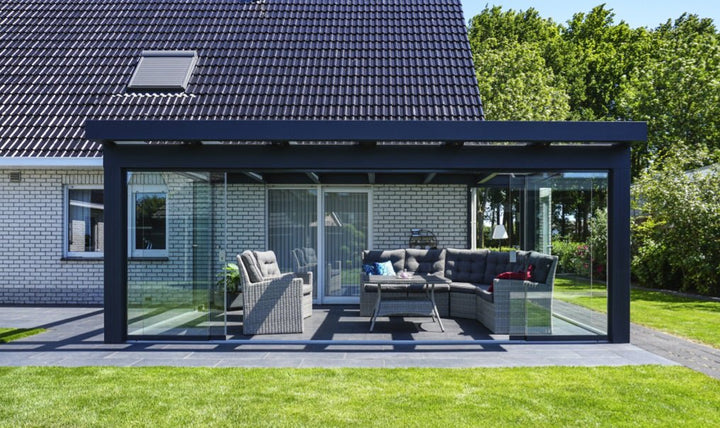Imagine transforming a plain room into a seamless, stylish sanctuary with a single versatile material – this is the transformative power of microcement. Once confined to traditional walls and floors, microcement now opens up a world of innovative possibilities, from sleek countertops and custom furniture to elegant bathroom fixtures. Its ability to be tailored in colour and texture allows it to harmonise effortlessly with contemporary design trends such as minimalist, industrial, and Scandinavian styles, ensuring spaces remain both fashionable and functional. Beyond its aesthetic versatility, microcement stands out for its durability and ease of maintenance, offering a cost-effective and sustainable solution compared to alternative materials. Whether renovating an existing space or designing anew, microcement provides a resilient and eco-friendly option that elevates any interior with its modern charm and practicality.
Innovative Applications of Microcement in Modern Interiors
Microcement has swiftly become a favourite in modern interior design, thanks to its remarkable versatility and seamless finish. Moving beyond the conventional walls and floors, this innovative material is now transforming various aspects of living spaces, offering both aesthetic charm and practical benefits.
Consider these unique applications of microcement:
- Countertops: Providing a sleek and durable surface, microcement countertops are perfect for kitchens and bathrooms, marrying functionality with elegant design.
- Furniture Surfaces: From dining tables to shelving units, microcement enhances furniture with its smooth texture and customizable finishes, adding a modern touch to any room.
- Bathroom Fixtures: Microcement sinks, bathtubs, and shower trays offer a minimalist and hygienic alternative to traditional materials, creating a cohesive and stylish bathroom environment.
Additionally, the ability to customise colours and textures makes microcement adaptable to various design aesthetics, whether you’re aiming for an industrial edge or a cosy, Scandinavian feel. Real-life case studies highlight how creative applications of microcement can elevate interior spaces, demonstrating its potential to solve design challenges and enhance overall functionality.
Design Trends Featuring Microcement for Stylish Spaces
In the ever-evolving world of interior design, microcement has carved out its niche as a versatile material that seamlessly integrates with various style trends. Whether you’re embracing the clean lines of minimalist aesthetics, the raw edge of industrial settings, or the cozy simplicity of Scandinavian décor, microcement offers a sleek, unified look that ties everything together. Its seamless application not only enhances the visual appeal but also adds a layer of durability that stands up to the demands of modern living.
One of the most compelling aspects of microcement is its ability to adapt to a wide range of colour palettes and finish options. Current trends showcase a preference for neutral tones like greys, blacks, and whites, which provide a timeless backdrop for any space. Additionally, matte and satin finishes are particularly popular, offering a sophisticated texture that complements the subtle elegance of contemporary interiors. By choosing the right colour and finish, homeowners can effortlessly align their microcement surfaces with the overarching design narrative of their spaces.
Visualizing these trends comes alive through carefully curated mood boards and design inspirations that highlight the versatility of microcement. From modern kitchens and bathrooms to expansive living areas and commercial spaces, microcement serves as a foundational element that enhances both aesthetics and functionality. As designers continue to push the boundaries, the integration of microcement into stylish spaces remains a testament to its enduring appeal and adaptability.
Preparing and Applying Microcement: Best Practices
Achieving a flawless microcement finish starts with meticulous surface preparation. Begin by thoroughly cleaning the area to remove any debris, grease, or existing coatings. It’s crucial to ensure the surface is dry and level to prevent imperfections. Repair any cracks or uneven spots using a suitable filler, allowing ample time for it to set before proceeding.
The application process of microcement demands both patience and precision. Apply the material in thin, even layers, allowing each coat to dry completely before adding the next. Employing smoothing techniques such as using a trowel or spatula will help achieve that sought-after seamless finish. Essential tools and materials include a high-quality trowel, mixing containers, and protective gear to ensure safety and efficiency during installation.
For a durable and aesthetically pleasing outcome, follow these expert tips:
- Maintain a consistent thickness across all layers to avoid weak spots.
- Use high-grade microcement products recommended by professionals.
- Allow adequate drying time between applications to enhance longevity.
- Seal the finished surface properly to protect against moisture and wear.
By adhering to these best practices, you can transform any wall or floor with a resilient and beautiful microcement finish that stands the test of time.
Maintenance and Durability of Microcement Surfaces
Microcement stands out for its exceptional longevity and resilience across various environments. Whether applied to kitchens, bathrooms, or commercial spaces, its seamless finish resists cracks and stains, maintaining its pristine look over time. Regular upkeep is straightforward, requiring only mild cleaning agents to preserve its appearance and functionality.
To ensure your microcement surfaces remain in top condition, it is essential to follow a simple maintenance routine. Avoid abrasive cleaners that can damage the finish and instead opt for pH-neutral products. Periodic resealing can enhance resistance to moisture and wear, extending the lifespan of your surfaces. Compared to traditional materials like ceramic tiles or hardwood flooring, microcement offers superior durability with less frequent maintenance needs.
Material
Durability
Maintenance
Cost Over Time
Microcement
High resistance to cracks and stains
Simple cleaning with mild agents, periodic resealing
Cost-effective due to longevity and minimal maintenance
Ceramic Tiles
Prone to cracking under heavy impact
Requires grout cleaning and occasional regrouting
Higher long-term costs due to repairs and grout maintenance
Hardwood Flooring
Susceptible to scratches and moisture damage
Regular polishing and refinishing needed
Expensive over time with ongoing maintenance
Common concerns about wear and tear are effectively addressed with microcement’s robust composition. Its seamless nature eliminates joints where dirt and moisture can accumulate, reducing the risk of damage. Additionally, its flexibility allows it to adapt to structural movements without compromising integrity, making it a reliable choice for both residential and commercial applications.
Need microcement? Go to: https://www.festfloor.com/
Cost-Effectiveness and Sustainability of Microcement Solutions
When weighing up microcement against traditional surfaces like tiles or hardwood, the initial cost factors might seem comparable, but a deeper dive reveals significant long-term financial benefits. Microcement’s durability means fewer repairs and replacements over time, translating to low maintenance costs that savvy homeowners and businesses alike appreciate. Experts advise that investing in microcement today can lead to substantial savings tomorrow, as its resilience withstands wear and tear far better than many alternatives.
Beyond the wallet, microcement stands out in the realm of sustainability. Its application process generates less waste, and the materials used are often more environmentally friendly than those of competing surfaces. Sustainability metrics show that microcement has a lower carbon footprint, making it a responsible choice for the eco-conscious. Incorporating microcement not only enhances your space but also supports a greener future. Below is a comparison table highlighting the cost-effectiveness and sustainability of microcement versus other popular surface options:
Surface Type
Initial Cost
Maintenance Cost
Durability
Environmental Impact
Microcement
£30 per m²
£5 per m²/year
High
Low Carbon Footprint
Tiles
£25 per m²
£10 per m²/year
Medium
Moderate Waste
Hardwood
£40 per m²
£15 per m²/year
Medium
High Deforestation Impact




